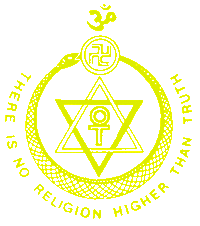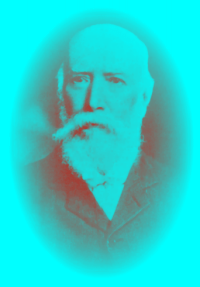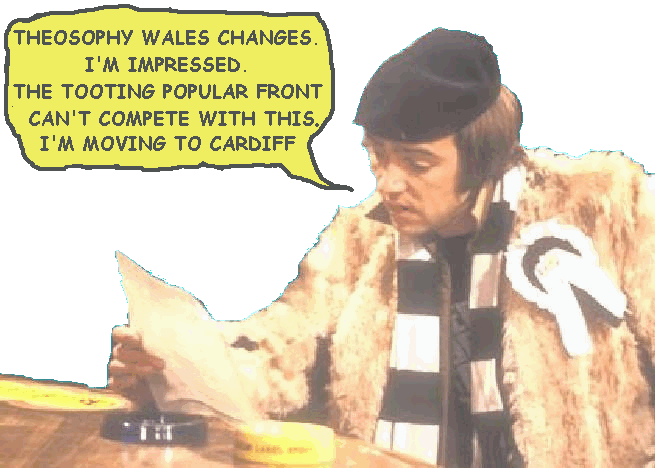VANGUARD
Phase
1 Standard Vanguard introduced July 1947
The Standard Vanguard was produced
by
the Standard Motor Company
in
The Standard Vanguard has very little (in fact
nothing)
to do with Theosophy but we have found that
Theosophists and new enquirers do like pictures
of classic cars and we get a lot of positive
feedback.
You can find Theosophy Wales groups
in
Bangor, Cardiff, Conwy
& Swansea
Theosophy Wales has no controlling
body
and is made up of
independent groups
________________________
Theosophy
we are pleased to present here an in depth
manual of Theosophical ideas and concepts by Alfred Percy Sinnett
who
was a major contributor to the development of modern Theosophy in the early
years of the Theosophical movement
Esoteric
Buddhism
By
Alfred
Percy Sinnett
Buddha
Chapter 9
THE historical Buddha, as
known to the custodians of the esoteric doctrine, is a personage whose birth is
not invested with the quaint marvels popular story has crowded round it. Nor
was his progress to adeptship traced by the literal
occurrence of the super-natural struggles depicted in symbolic legend. On the
other hand, the incarnation, which may outwardly be described as the birth of
Buddha, is certainly not regarded by occult science as an event like any other
birth, nor the spiritual development through which Buddha passed during his
earth-life a mere process of intellectual evolution, like the mental history of
any other philosopher. The mistake which ordinary European writers make in
dealing with a problem of this sort, lies in their inclinations to treat
exoteric legend either as a record of a miracle about which no more need be
said, or as pure myth, putting merely a fantastic decoration on a remarkable
life. This, it is assumed, however remarkable, must have been lived according
to the theories of Nature at present accepted by the nineteenth century. The
account which has now been given in the foregoing pages may prepare the way for
a statement as to what the esoteric doctrine teaches concerning the real
Buddha, who was born, as modern investigation has quite correctly ascertained,
643 years before the Christian era, at Kapila-Vastu,
near Benares.
Exoteric conceptions, knowing
nothing of the laws which govern the operations of Nature in her higher
departments, can only explain an abnormal dignity attaching to some particular
birth, by supposing that the physical body of the person concerned was
generated in a miraculous manner. Hence the popular notion about Buddha, that
his incarnation in this world was due to an immaculate conception. Occult
science knows nothing of any process for the production of a physical human
child other than that appointed by physical laws; but it does know a good deal
concerning the limits within which the progressive “one life,” or “spiritual
monad,” or continuous thread of a series of incarnations may select a definite
child-bodies as their human tenements. By the operation of Karma, in the case
of ordinary mankind, this selection is made, unconsciously as far as the
antecedent spiritual Ego emerging from Devachan is concerned. But in those
abnormal cases where the one life has already forced itself into the sixth
principle - that is to say, where a man has become an adept, and has the power of
guiding his own spiritual Ego, in full consciousness as to what he is about,
after he has quitted the body in which he won adeptship,
either temporarily or permanently - it is quite within his power to select his
own next incarnation. During life, even, he gets above the Devachanic
attraction. He becomes one of the conscious directing powers of the planetary
system to which he belongs, and great as this mystery of selected
re-incarnation may be, it is not by any means restricted to its application to
such extraordinary events as the birth of a Buddha. It is a phenomenon
frequently reproduced by the higher adepts to this day; and while a great deal
recounted in popular Oriental mythology is either purely fictitious or entirely
symbolical, the re-incarnations of the Dalai and Teshu
Lamas of Tibet, at which travelers only laugh for want of the knowledge that
might enable them to sift fact from fancy, is a sober, scientific achievement.
In such cases the adept states beforehand in what child, when and where to be
born, he is going to re-incarnate, and he very rarely fails. We say very
rarely, because there are some accidents of physical nature which cannot be
entirely guarded against; and it is not absolutely certain that, with all the
foresight even an adept may bring to bear upon the matter, the child he may
choose to become - in his re-incarnated state - may attain physical maturity
successfully. And, meanwhile, in the body, the adept is relatively
helpless. Out of the body he is just what he has been ever since he became an
adept; but as regards the new body he has chosen to inhabit, he must let it
grow up in the ordinary course of Nature, and educate it by ordinary processes,
and initiate it by the regular occult method into adeptship,
before he has got a body fully ready again for occult work on the physical
plane. All these processes are immensely simplified, it is true, by the
peculiar spiritual force working within; but at first, in the child's body, the
adept soul is certainly cramped and embarrassed, and, as ordinary imagination
might suggest, very uncomfortable and ill at ease. The situation would be very
much misunderstood if the reader were to imagine that re-incarnation of the
kind described is a privilege which adepts avail themselves of with pleasure.
Buddha’s birth was a mystery
of the kind described, and by the light of what has been said, it will be easy
to go over the popular story of his miraculous origin, and trace the symbolic
references to the facts of the situation in some even of the most grotesque
fables. None, for example, can look less promising, as an allusion to anything
like a scientific fact, than the statement that Buddha entered the side of his
mother as a young white elephant. But the while elephant is simply the symbol
of adeptship - something considered to be a rare and
beautiful specimen of its kind. So with other ante-natal legends pointing to
the fact that the future child's body had been chosen as the habitation of a
great spirit already endowed with superlative wisdom and goodness. Indra and Brahma came to do homage to the child at his
birth - that is to say, the powers of Nature were already in submission to the
Spirit within him. The thirty-two signs of a Buddha, which legends describe by
means of a ludicrous physical symbolism, are merely the various powers of adeptship.
The selection of the body
known as Siddhartha, and afterwards as Gautama, son
of Suddhodana, of Kapila-Vastu,
as the human tenement of the enlightened human spirit, who had submitted to incarnation
for the sake of teaching mankind, was not one of those rare failures
spoken of above; on the contrary, it was a signally successful choice in all
respects, and nothing interfered with the accomplishment of adeptship
by the Buddha in his new body. The popular narrative of his ascetic struggles
and temptations, and of his final attainment of Buddhahood
under the Bo-tree, is nothing more, of course, than the exoteric version of his
initiation.
From that period onward, his
work was of a dual nature; he had to reform and revive the morals of the
populace and the science of the adepts - for adeptship
itself is subject to cyclic changes, and in need of periodical impulses. The
explanation of this branch of the subject, in plain terms, will not alone be
important for its own sake, but will be interesting to all students of exoteric
Buddhism, as elucidating some of the puzzling complications of the more
abstruse “Northern doctrine.”
A Buddha visits the earth for
each of the seven races of the great planetary period. The Buddha with whom we
are occupied was the fourth of the series, and that is why he stands fourth in
the list quoted by Mr Rhys Davids, from Burnouf - quoted as an illustration of the way the Northern
doctrine has been, as Mr Davids supposes, inflated by
metaphysical subtleties and absurdities crowded round the simple morality which
sums up Buddhism as presented to the populace. The fifth, or Maitreya Buddha, will come after the final disappearance of
the fifth race, and when the sixth race will already have been established on
earth for some hundreds of thousands of years. The sixth will come at the
beginning of the seventh race, and the seventh towards the close of that race.
This arrangement will seem,
at the first glance, out of harmony with the general design of human evolution.
Here we are, in the middle of the fifth race, and yet it is the fourth Buddha
who has been identified with this race, and the fifth will not come till the
fifth race is practically extinct. The explanation is to be found, however, in
the great outlines of the esoteric cosmogony. At the beginning of each great
planetary period, when obscuration comes to an end, and the human tide-wave in
its progress round the chain of worlds arrives at the shore of a globe where no
humanity has existed for milliards of years, a teacher is required from the
first for the new crop of mankind about to spring up. Remember that the
preliminary evolution of the mineral, vegetable, and animal kingdoms has been
accomplished in preparation for the new round-period. With the first infusion
of the life-current into the “missing link” species, the first race of the new
series will begin to evolve. It is then that the Being, who may be considered
the Buddha of the first race, appears. The Planetary Spirit, or Dhyân Chohan, who is - or, to
avoid the suggestion of an erroneous idea by the use of a singular verb, let us
defy grammar, and say, who are - Buddha in all his or their developments,
incarnates among the young, innocent, teachable fore-runners of the new
humanity, and impresses the first broad principles of right and wrong, and the
first truths of the esoteric doctrine on a sufficient number of receptive
minds, to ensure the continued reverberation of the ideas so implanted through
successive generations of men in the millions of years to come, before the
first race shall have completed its course. It is this advent in the beginning
of the round-period of a Divine Being in human form that starts the
ineradicable conception of the anthropomorphic God in all exoteric religions.
The first Buddha of the
series in which Gautama Buddha stands fourth, is thus
the second incarnation of Avaloketiswara - the mystic
name of the hosts of the Dhyân Chohans or Planetary
Spirits belonging to our planetary chain - and though Gautama
is thus the fourth incarnation of enlightenment by exoteric reckoning, he is
really the fifth of the true series, and thus properly belonging to our fifth
race.
Avaloketiswara,
as just stated, is the mystic name of the hosts of the Dhyân
Chohans; the proper meaning of the word is manifested wisdom, just as Addi-Buddha and Amitabha both
mean abstract wisdom.
The doctrine, as quoted by Mr
Davids, that “every earthly mortal Buddha has his
pure and glorious counterpart in the mystic world, free from the debasing
conditions of this material life - or, rather, that the Buddha under material
conditions is only an appearance, the reflection, or emanation, or type of a
Dhyani Buddha” - is perfectly correct; the number of Dhyani Buddhas, or Dhyân Chohans, or planetary spirits, perfected human
spirits of former world-periods, is infinite, but only five are practically
identified in exoteric, and seven in esoteric, teaching, and this
identification, be it remembered, is a manner of speaking which must not be
interpreted too literally, for there is a unity in the sublime spirit-life in
question that leaves no room for the isolation of individuality. All this will
be seen to harmonize perfectly with the revelations concerning Nature embodied
in previous chapters, and need not, in any way, be attributed to mystic
imaginings. The Dhyani Buddhas, or Dhyân Chohans, are
the perfected humanity of previous manwantaric
epochs, and their collective intelligence is described by the name “Addi Buddha,” which Mr Rhys Davids
is mistaken in treating as a comparatively recent invention of the Northern
Buddhists. Addi-Buddha means primordial wisdom, and
is mentioned in the oldest Sanscrit books. For
example, in the philosophical dissertation on the “Mandukya
Upanishad,” by Gowdapatha, a Sanscrit
author contemporary with Buddha himself, the expression is freely used and
expounded in exact accordance with the present statement. A friend of mine in
India, a Brahmin pundit of first-rate attainments as a Sanscrit
scholar, has shown me a copy of this book, which has never yet, that he knows
of, been translated into English, and has pointed out a sentence bearing on the
present question, giving me the following translation: “Prakriti
itself, in fact, is Addi-Buddha, and all the Dharmas have been existing from eternity.” Gowdapatha is a philosophical writer respected by all Hindoo and Buddhist sects alike, and widely known. He was
the guru, or spiritual teacher, of the first Sankaracharya,
of whom I shall have to speak more at length very shortly.
Adeptship,
when Buddha incarnated, was not the condensed, compact hierarchy that it has
since become under his influence. There has never been an age of the world
without its adepts; but they have sometimes been scattered throughout the
world, they have sometimes been isolated in separate seclusions, they have
gravitated now to this country, now to that; and finally, be it remembered,
their knowledge and power has not always been inspired with the elevated and
severe morality which Buddha infused into its latest and highest organization.
The reform of the occult world by his instrumentality was, in fact, the result
of his great sacrifice, of the self-denial which induced him to reject the
blessed condition of Nirvana to which, after his earth-life as Buddha, he was
fully entitled, and undertake the burden of renewed incarnations in order to
carry out more thoroughly the task he had taken in hand, and confer a
correspondingly increased benefit on mankind. Buddha re-incarnated himself, next
after his existence as Gautama Buddha, in the person
of the great teacher of whom but little is said in exoteric works on Buddhism,
but without a consideration of whose life it would be impossible to get a
correct conception of the position in the Eastern world of esoteric science -
namely, Sankaracharya. The latter part of this name,
it may be explained - acharya - merely means teacher.
The whole name as a title is perpetuated to this day under curious
circumstances, but the modern bearers of it are not in the direct line of
Buddhist spiritual incarnations.
Sankaracharya appeared in India - no
attention being paid to his birth, which appears to have taken place on the
The position was as follows:
- Up to the time of Buddha, the Brahmins of India had jealously reserved occult
knowledge as the appanage of their own caste.
Exceptions were occasionally made in favour of Tshatryas,
but the rule was exclusive in a very high degree. This rule Buddha broke down,
admitting all castes equally to the path of adeptship.
The change may have been perfectly right in principle, but it paved the way for
a great deal of trouble, and, as the Brahmins conceived, for the degradation of
occult knowledge itself - that is to say, its transfer to unworthy hands, not
unworthy merely because of caste inferiority, but because of the moral
inferiority which they conceived to be introduced into the occult fraternity
together with brothers of low birth. The Brahmin contention would not by any
means be, that because a man should be a Brahmin, it followed that he was
necessarily virtuous and trustworthy; but the argument would be: It is
supremely necessary to keep out all but the virtuous and trustworthy from the
secrets and powers of initiation. To that end it is necessary not only to set
up all the ordeals, probations, and tests we can think of, but also to take no
candidates except from the class which, on the whole, by reason of its
hereditary advantages, is likely to be the best nursery of fit candidates.
Later experience is held on
all hands now to have gone far towards vindicating the Brahmin apprehension,
and the next incarnation of Buddha, after that in the person of Sankaracharya, was a practical admission of this; but
meanwhile, in the person of Sankaracharya, Buddha was
engaged in smoothing over, beforehand, the sectarian strife in India which he
saw impending. The active opposition of the Brahmins against Buddhism began in Asoka’s time, when the great efforts made by that ruler to
spread Buddhism provoked an apprehension on their part in reference to their
social and political ascendency. It must be
remembered that initiates are not wholly free in all cases from the prejudices
of their own individualities. They possess some such god-like attributes
that outsiders, when they first begin to understand something of these, are apt
to divest them, in imagination, even too completely of human frailties.
Initiation and occult knowledge, held in common, is certainly a bond of union,
among adepts of all nationalities, which is far stronger than any other bond.
But it has been found on more occasions than one to fail in obliterating all
other distinctions. Thus the Buddhist and Brahmin initiates of the period
referred to were by no means of one mind on all questions, and the Brahmins
very decidedly disapproved of the Buddhist reformation in its exoteric aspects.
Chandragupta, Asoka’s grandfather, was an upstart,
and the family were Sudras. This was enough to render
his Buddhist policy unattractive to the representatives of the orthodox Brahmin
faith. The struggle assumed a very embittered form, though ordinary history
gives us few or no particulars. The party of primitive Buddhism was entirely
worsted, and the Brahmin ascendency completely
re-established in the time of Vikramaditya, about 80
B.C. But Sankaracharya had traveled all over India in
advance of the great struggle, and had established various mathams,
or schools of philosophy, in several important centres. He was only engaged in
this task for a few years, but the influence of his teaching has been so
stupendous that its very magnitude disguises the change wrought. He brought
exoteric Hinduism into practical harmony with the esoteric “wisdom religion,”
and left the people amusing themselves still with their ancient mythologies,
but leaning on philosophical guides who were esoteric Buddhists to all intents
and purposes, though in reconciliation with all that was ineradicable in Brahminism. The great fault of previous exoteric Hinduism
lay in its attachment to vain ceremonial, and its adhesion to idolatrous
conceptions of the divinities of the Hindu Pantheon. Sankaracharya
emphasized, by his commentaries on the Upanishads, and by his original
writings, the necessity of pursuing gnyanam in
order to obtain moksha - that is to
say, the importance of the secret knowledge, to spiritual progress and the
consummation thereof. He was the founder of the Vedantin
system - the proper meaning of Vedanta being the final end or crown of
knowledge - though the sanctions of that system are derived by him from the
writings of Vyasa, the author of the “Mahabharata,”
the “Puranas,” and the “Brahmasutras.”
I make these statements, the reader will understand, not on the basis of any
researches of my own - which I am not Oriental scholar enough to attempt - but
on the authority of a Brahmin initiate who is himself a first-rate Sanscrit scholar as well as an occultist.
The Vedantin
school at present is almost co-extensive with Hinduism, making allowance, of
course, for the existence of some special sects, like the Sikhs, the Vallabacharyas, or Maharajah sect, of very unfair fame, and
may be divided into three great divisions - the Adwaitees,
the Vishishta Adwaitees,
and the Dwaitees. The outline of the Adwaitee doctrine is that brahmum
or purush, the universal spirit, acts only
through prakriti, matter, that
everything takes place in this way through the inherent energy of matter. Brahmum, or Parabrahm, is thus a
passive, incomprehensible, unconscious principle, but the essence, one life, or
energy of the universe. In this way the doctrine is identical with the
transcendental materialism of the adept esoteric Buddhist philosophy. The name Adwaitee signifies not dual, and has reference
partly to the non-duality, or unity of the universal spirit, or Buddhist one
life, as distinguished from the notion of its operation through anthropomorphic
emanations; partly to the unity of the universal and the human spirit. As a
natural consequence of this doctrine, the Adwaitees
infer the Buddhist doctrine of Karma, regarding the future destiny of man, as
altogether depending on the causes he himself engenders.
The Vishishta
Adwaitees modify these views by the interpolation of
Vishnu as a conscious deity, the primary emanation of Parabrahm,
Vishu being regarded as a personal god, capable of
intervening in the course of human destiny. They do not regard yog, or spiritual training, as the proper avenue to
spiritual achievement, but conceive this to be possible, chiefly by means of Bhakti, or devoutness. Roughly stated in the
phraseology of European theology, the Adwaitee may thus
be said to believe only in salvation by works, the Vishishta
Adwaitee in salvation by grace. The Dwaitee differs but little from the Vishishta
Adwaitee, merely affirming, by the designation he
assumes, with increased emphasis the duality of the human spirit and the
highest principle of the universe, and including many ceremonial observances as
an essential part of Bhakti.
But all these differences of
view, it must be borne in mind, have to do merely with the exoteric variations
on the fundamental idea, introduced by different teachers with varying
impressions as to the capacity of the populace for assimilating transcendental
ideas. All leaders of Vedantin thought look up to Sankaracharva and the mathams he
established with the greatest possible reverence, and their inner faith runs up
in all cases into the one esoteric doctrine. In fact the initiates of all
schools in India interlace with one another. Except as regards nomenclature,
the whole system of cosmogony, as held by the Buddhist-Arhats,
and as set forth in this volume, is equally held by initiated Brahmins, and has
been equally held by them since before Buddha’s birth. Whence did they obtain
it? the reader may ask. Their answer would be from the Planetary Spirit, or Dhyân Chohan, who first visited
this planet at the dawn of the human race in the present round-period - more
millions of years ago than I like to mention on the basis of conjecture, while
the real exact number is withheld.
Sankaracharya
founded four principal mathams, one at Sringari, in Southern India, which has always remained the
most important; one at Juggernath, in Orissa; one at Dwaraka, in Kathiawar; and one at Gungotri,
on the slopes of the Himalayas in the North. The chief of the Sringari temple has always borne the designation Sankaracharya, in addition to some individual name. From
these four centres others have been established, and mathams
now exist all over India, exercising the utmost possible influence on Hinduism.
I have said that Buddha, by his
third incarnation, recognized the fact that he had, in the excessive confidence
of his loving trust in the perfectibility of humanity, opened the doors of the
occult sanctuary too widely. His third appearance was in the person of Tsong-ka-pa, the great Tibetan adept reformer of the
fourteenth century. In this personality he was exclusively concerned with the
affairs of the adept fraternity, by that time collecting chiefly in Tibet.
From time immemorial there
had been a certain secret region in Tibet, which to this day is quite unknown
to and unapproachable by any but initiated persons, and inaccessible to the
ordinary people of the country as to any others, in which adepts have always
congregated. But the country generally was not in Buddha’s time, as it has
since become, the chosen habitation of the great brotherhood. Much more than
they are at present, were the Mahatmas in former times, distributed about the
world. The progress of civilization, engendering the magnetism they find so
trying, had, however, by the date with which we are now dealing - the
fourteenth century - already given rise to a very general movement towards
Tibet on the part of the previously dissociated occultists. Far more widely
than was held to be consistent with the safety of mankind was occult knowledge
and power then found to be disseminated. To the task of putting it under the
control of a rigid system of rule and law did Tsong-ka-pa
address himself.
Without re-establishing the
system on the previous unreasonable basis of caste exclusiveness, he elaborated
a code of rules for the guidance of the adepts, the effect of which was to weed
out of the occult body all but those who sought occult knowledge in a spirit of
the most sublime devotion to the highest moral principles.
An article in the Theosophist
for March, 1882, on “Re-incarnations in Tibet,” for the complete
trustworthiness of which in all its mystic bearings I have the highest
assurance, gives a great deal of important information about the branch of the
subject with which we are now engaged, and the relations between esoteric
Buddhism and Tibet, which cannot be examined too closely by any one who desires
an exhaustive comprehension of Buddhism in its real signification.
“The regular system,” we
read, “of the Lamaic incarnations of ‘Sangyas’ (or Buddha) began with Tsong-kha-pa.
This reformer is not the incarnation of one of the five celestial Dhyanis or
heavenly Buddhas, as is generally supposed, said to have been created by Sakya Muni after he had risen to
Nirvana, but that of Amita, one of the Chinese names
for Buddha. The records preserved in the Gon-pa
(lamasery) of Tda-shi Hlum-po
(spelt by the English Teshu Lumbo) show that Sangyas
incarnated himself in Tsong-kha-pa in consequence of
the great degradation his doctrines had fallen into. Until then there had been
no other incarnations than those of the five celestial Buddhas, and of their Boddhisatvas, each of the former having created (read,
overshadowed with his spiritual wisdom) five of the last named . . . . . It was
because, among many other reforms, Tsong-kha-pa
forbade necromancy (which is practiced to this day with the most disgusting
rites by the Bhöns - the aborigines of Tibet, with
whom the Red Caps or Shammars had always fraternized)
that the latter resisted his authority. This act was followed by a split
between the two sects. Separating entirely from the Gyalukpas,
the Dugpas (Red Caps), from the first in a great
minority, settled in various parts of Tibet, chiefly its border-lands, and
principally in Nepaul and Bhootan. But, while they
retained a sort of independence at the monastery of Sakia-Djong,
the Tibetan residence of their spiritual (?) chief, Gong-sso
Rimbo-chay, the Bhootanese
have been from their beginning the tributaries and vassals of the Dalai Lamas.
“The Tda-shi
Lamas were always more powerful and more highly considered than the Dalai
Lamas. The latter are the creation of the Tda-shi
Lama, Nabang-lob-sang, the sixth incarnation of Tsong-kha-pa, himself an incarnation of Amitabha
or Buddha.”
Several writers on Buddhism
have entertained a theory, which Mr Clements Markham formulates very fully in
his “Narrative of the Mission of George Bogle to
Tibet,” that whereas the original Scriptures of Buddhism were taken to Ceylon
by the son of Asoka, the Buddhism which found its way into Tibet from India and
China was gradually overlaid with a mass of dogma and metaphysical speculation.
And Professor Max Müller says: - “The most important
element in the Buddhist reform has always been its social and moral code, not
its metaphysical theories. That moral code, taken by itself, is one of the most
perfect which the world has ever known; and it was this blessing that the
introduction of Buddhism brought into Tibet.”
“The blessing,” says the
authoritative article in the Theosophist, from which I have just been
quoting, “has remained and spread all over the country, there being no kinder,
purer-minded, more simple, or sin-fearing nation than the Tibetans. But for all
that, the popular lamaism, when compared with the
real esoteric, or Arahat, Buddhism of Tibet, offers a
contrast as great at the snow trodden along a road in the valley to the pure
and undefiled mass which glitters on the top of a high mountain peak.”
The fact is, that Ceylon is
saturated with exoteric, and Tibet with esoteric, Buddhism. Ceylon concerns
itself merely or mainly with the morals, Tibet, or rather the adepts of Tibet,
with the science, of Buddhism.
These explanations constitute
but a sketch of the whole position. I do not possess the arguments nor the
literary leisure which would be required for its amplification into a finished
picture of the relations which really subsist between the inner principles of
Hinduism and those of Buddhism. And I am quite alive to the possibility that
many learned and painstaking students of the subject will have formed, as the
consequences of prolonged and erudite research, conclusions with which the
explanations I am now enabled to give, may seem at first sight to conflict. But
none the less are these explanations directly gathered from authorities to whom
the subject is no less familiar in its scholarly than in its esoteric aspect.
And their inner knowledge throws a light upon the whole position which wholly
exempts them from the danger of misconstruing texts and mistaking the bearings
of obscure symbology. To know when Gautama Buddha was
born, what is recorded of his teaching, and what popular legends have gathered
round his biography, is to know next to nothing of the real Buddha, so much
greater than either the historical moral teacher, or the fantastic demigod of
tradition. And it is only when we have comprehended the link between Buddhism
and Brahaminism that the greatness of the esoteric
doctrine rises into its true proportions.

Standard
Vanguard Brochure Cover Late 1940s
In
1949 you could buy a Vanguard for £671 (including purchase tax)
_____________________________
More Theosophy Stuff
with these links
Cardiff Theosophical
Society meetings are informal
and there’s always a cup of tea afterwards
The
Cardiff Theosophical Society Website

1948
Standard Vanguard
The
National Wales Theosophy Website
Bangor,
Cardiff, Conwy & Swansea
If you
run a Theosophy Group, please feel free
to use any of the
material on this site

1953
Standard Vanguard Pickup
The Most Basic Theosophy
Website in the Universe
A quick overview of Theosophy
and the Theosophical Society
If you run a Theosophy Group you
can use this as an introductory handout.
Theosophy Cardiff’s Instant Guide

Phase
II Standard Vanguard 1953 -55
Theosophical Movement in Wales
as
it separates into independent
groups that run do their own show
One liners and quick explanations
H P
Blavatsky is usually the only
Theosophist
that most people have ever
heard of. Let’s
put that right
The Voice of the Silence Website

Phase
III Standard Vanguard Circa 1959
An
Independent Theosophical Republic
Links
to Free Online Theosophy
Study
Resources; Courses, Writings,
The main criteria for the inclusion of
links on this site is that they have some
relationship (however tenuous) to Theosophy
and are lightweight, amusing or entertaining.
Topics include Quantum Theory and Socks,
Dick Dastardly and Legendary Blues Singers.
A selection of articles on Reincarnation
Provided in response to the large
number of enquiries we receive at
Cardiff Theosophical Society on this subject

Phase
III Standard Vanguard Circa 1962
The Voice of the Silence Website
This is for
everyone, you don’t have to live
in Wales to make
good use of this Website

A
Phase I 1949 Standard Vanguard with sidelights
A Vanguard tested by The Motor magazine in 1949
had a top speed of 78.7 mph
(126.7 km/h) and could accelerate from 0-60 mph
(97 km/h) in 21.5 seconds.
A fuel consumption of 22.9 miles per imperial
gallon
No
Aardvarks were harmed in the

Phase
III Standard Vanguard Early 60s
Within the British Isles, The
Adyar Theosophical Society has Groups in;
Bangor*Basingstoke*Billericay*Birmingham*Blackburn*Bolton*Bournemouth
Bradford*Bristol*Camberley*Cardiff*Chester*Conwy*Coventry*Dundee*Edinburgh
Folkstone*Glasgow*Grimsby*Inverness*Isle
of Man*Lancaster*Leeds*Leicester
Letchworth*London*Manchester*Merseyside*Middlesborough*Newcastle upon Tyne
North Devon*Northampton*Northern Ireland*Norwich*Nottingham
Perth*Republic of Ireland*Sidmouth*Southport*Sussex*Swansea*Torbay
Tunbridge Wells*Wallasey*Warrington*Wembley*Winchester*Worthing
The Spiritual Home of Urban Theosophy
The Earth Base for Evolutionary Theosophy
_____________________
Concerns about the fate of the
wildlife as
Tekels Park is to be Sold to a
Developer
Concerns are raised about the fate of
the wildlife as
The Spiritual Retreat, Tekels Park in
Camberley,
Surrey, England is to be sold to a
developer.
Tekels Park is a 50 acre woodland
park, purchased
for the Adyar
Theosophical Society in England in 1929.
In addition to concern about the
park, many are
worried about the
future of the Tekels Park Deer
as they are not a
protected species.
It doesn’t require a Diploma in Finance
and even someone
with a Diploma in
Astral Travel will know that this is a
bad time economically to sell Tekels Park
Anyone planning a “Spiritual” stay at
the
Tekels Park Guest House should be
aware of the sale.
____________________
A
B
C
D
EFG
H
IJ
KL
M
N
OP
QR
S
T
UV
WXYZ
Complete Theosophical Glossary in Plain Text Format
1.22MB
Quick
Explanations with Links to More Detailed Info
What is Theosophy ? Theosophy Defined (More Detail)
Three Fundamental Propositions Key Concepts of Theosophy
Cosmogenesis
Anthropogenesis
Root Races
Karma
Ascended Masters After Death States
Reincarnation
The Seven Principles of Man Helena Petrovna Blavatsky
Colonel Henry Steel Olcott William Quan Judge
The Start of the Theosophical Society
History of the Theosophical Society
Theosophical Society Presidents
History of the Theosophical Society in Wales
The Three Objectives of the Theosophical Society
Explanation of the Theosophical Society Emblem
Glossaries of Theosophical Terms
An Outstanding Introduction to Theosophy
By a student of Katherine Tingley
Elementary Theosophy Who is the Man? Body and Soul
Body, Soul and Spirit Reincarnation Karma

Standard
Vanguard Promotional Literature Late 1940s
What Theosophy Is From the Absolute to Man
The Formation of a Solar System The Evolution of Life
The Constitution of Man After Death Reincarnation
The Purpose of Life The Planetary Chains
The Result of Theosophical Study
An Outline of Theosophy
Charles Webster Leadbeater
Theosophy - What it is How is it Known? The Method of Observation
General Principles The Three Great Truths The Deity
Advantage Gained from this
Knowledge The Divine Scheme
The Constitution of Man The True Man Reincarnation
The Wider Outlook Death Man’s Past and Future
Cause and Effect What Theosophy does for us

Standard Vanguard Estate
Circa 1952
Try these if you are looking
for a local
Theosophy Group or Centre
UK Listing of Theosophical Groups
Please tell us about your UK Theosophy Group
___________________
into categories and presented according to relevance of
website.
Web Directory
- Add Link - Submit Article - Online Store - Forum

Standard
Vanguard Van Circa 1952
______________________
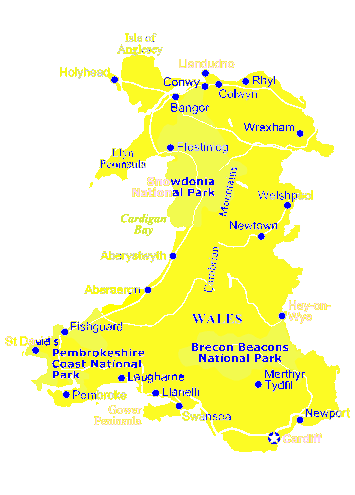
General pages about Wales, Welsh History
and The History of Theosophy in Wales
Wales is a
Principality within the United Kingdom and has an eastern
border with England. The
land area is just over 8,000 square miles.
Snowdon in North Wales is
the highest mountain at 3,650 feet.
The coastline is
almost 750 miles long. The population of Wales
as at the 2001 census is 2,946,200.
________________
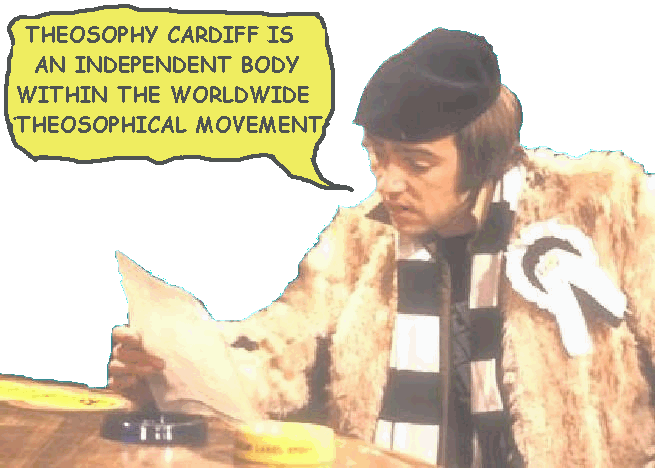
Bangor Conwy
& Swansea Lodges are members
of the Welsh Regional Association
(Formed 1993).
Theosophy Cardiff separated from the
Welsh Regional
Association in March 2008 and became an independent
body within the Theosophical Movement in March 2010
High
Drama & Worldwide Confusion
as
Theosophy Cardiff Separates from the
Welsh
Regional Association (formed 1993)
Theosophy Cardiff cancels its Affiliation
to the Adyar Based Theosophical Society
Cardiff, Wales,
UK, CF24 – 1DL

